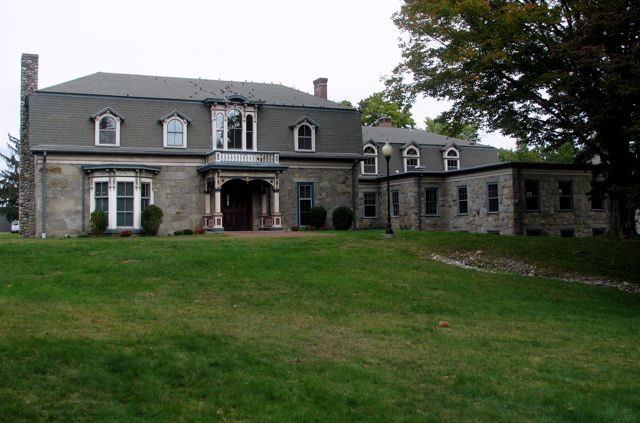East Campus
The State Home and School / Patrick I. O'Rourke Center
The East Campus of Rhode Island College has a long history of state usage. First developed as a farm for Providence businessman George W. Chapin, the land was in use of the state as the State Home and School for Dependent and Neglected Children by 1885. The State Home was one of the first institutions of its kind in the country, challenging traditional models of child welfare to focus on holistic care and a campus-like setting that housed children in domestic-scale buildings. In 1947, the State Home and School reorganized and became the Dr. Patrick I. O’Rourke Children’s Center. The Children’s Center era began a new period of construction where the State Home wooden cottages were torn down and the modern brick buildings now in use by Rhode Island College were constructed. The College acquired the land from the Department of Youth, Children, and Families who took ownership after the closure of the O’Rourke Center in 1979. In the 1990s, RIC acquired eleven brick buildings, one historic wooden cottage, and the c.1870s stone house built by George Chapin and later used for administrative purposes by the State Home and Children’s Center.
A National Register of Historic Places nomination for the State Home and School/Children’s Center property remains under review by the Rhode Island Historical Preservation & Heritage Commission.
The Sylvan R. Forman Center is the Rhode Island College Admissions Office and one of the centerpiece administrative buildings on campus. Sylvan Rolfe Forman was born in Providence and studied at Bryant University before becoming a regional postal worker. His wife, Helen (Ginsburg) Forman was an alumna of the Rhode Island College of Education and the two became benefactors of the institution.
The Forman Center is the oldest building on campus. Built for George W. Chapin c.1875 in the formerly rural area, the building was later adapted as the Superintendent’s House for the State Home and School/O’Rourke Center and used as an administrative building through the institution’s closure in 1979. Rhode Island College acquired the building in 1991. Since then RIC has restored the building, taking care to preserve original details.
